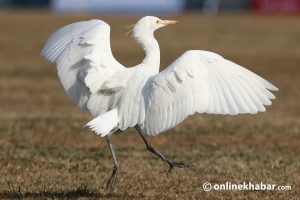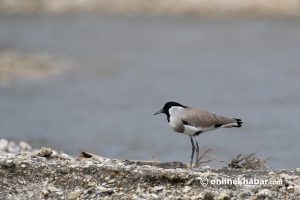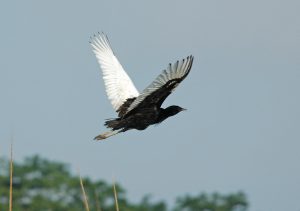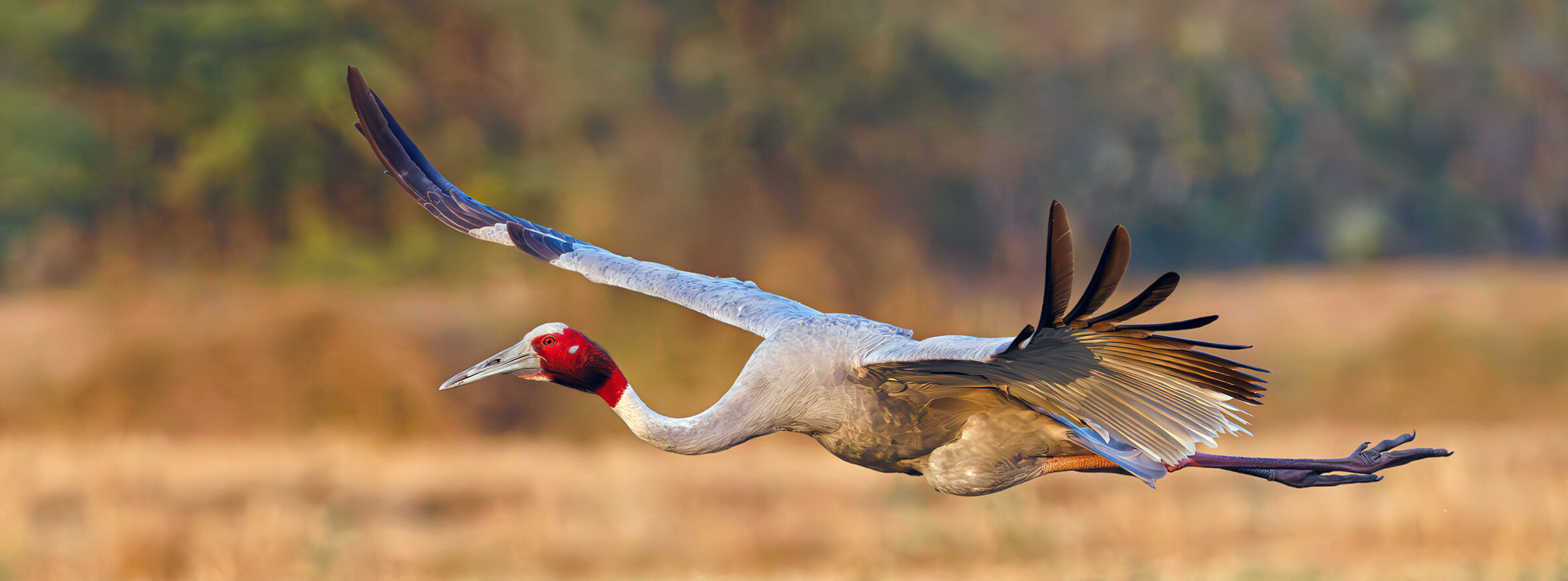
Long ago, in the ancient kingdom of Kapilavastu, young prince Siddhartha Gautama, who would later become the Buddha, and his cousin Devadatta were honing their archery skills when Devdatta spotted a magnificent sarus crane (Antigone antigone). With a swift motion, he released his arrow and hit the bird. The crane fell to the ground, bleeding profusely.
Devdatta grabbed the crane, claiming it as his trophy. Siddhartha gently pulled out the arrow from its body. He said that he wanted to heal the bird and set it free. Devdatta protested and argued that the bird was rightfully his, as per the Kshatriya Dharma, the code of the warrior clan to which they belonged.
The argument escalated and reached the ears of King Suddhodhana, Siddhartha’s father, who referred the matter to his court. The court, after much deliberation, decided Siddhartha was right. They decided that “life belongs to those who seek to preserve it, not to those who seek to destroy it.”
Fast forward a couple of thousand years and the cranes, which were once abundant across the entire Terai Arc Landscape in southern Nepal and northern India, are mostly concentrated (in the case of Nepal) in and around the Greater Lumbini Area, the birthplace of prince Siddhartha in what is now Nepal.
For some conservationists and Buddhist devotees, this is due to the lasting legacy of the prince, who later transformed into the Gautama Buddha (the enlightened one) and inspired generation after generation to protect the species in a changing world. Others, meanwhile, remain sceptical about the theory and note that farming practices and climatic conditions may have helped the sarus cranes survive in Lumbini.
“This story [of the Buddha saving the crane] shows that sarus cranes were present in the Buddha’s birthplace even during his lifetime,” says monk Metteyya Sakyaputta, former vice-chair of the Lumbini Development Trust that administers the area where the kingdom of Kapilvastu once sat.
Though researchers debate the exact cause of the crane’s concentration in Lumbini and its global population in the face of limited study, a restoration project to create artificial wetlands for the cranes has stepped into the picture. Conservationists leading the wetland project, dubbed a crane “sanctuary” within the Buddha’s birthplace, are trying to help protect the vulnerable species facing mounting habitat pressures as its numbers dwindle elsewhere.
And now, they argue, their wetland sanctuary is bearing some fruit.
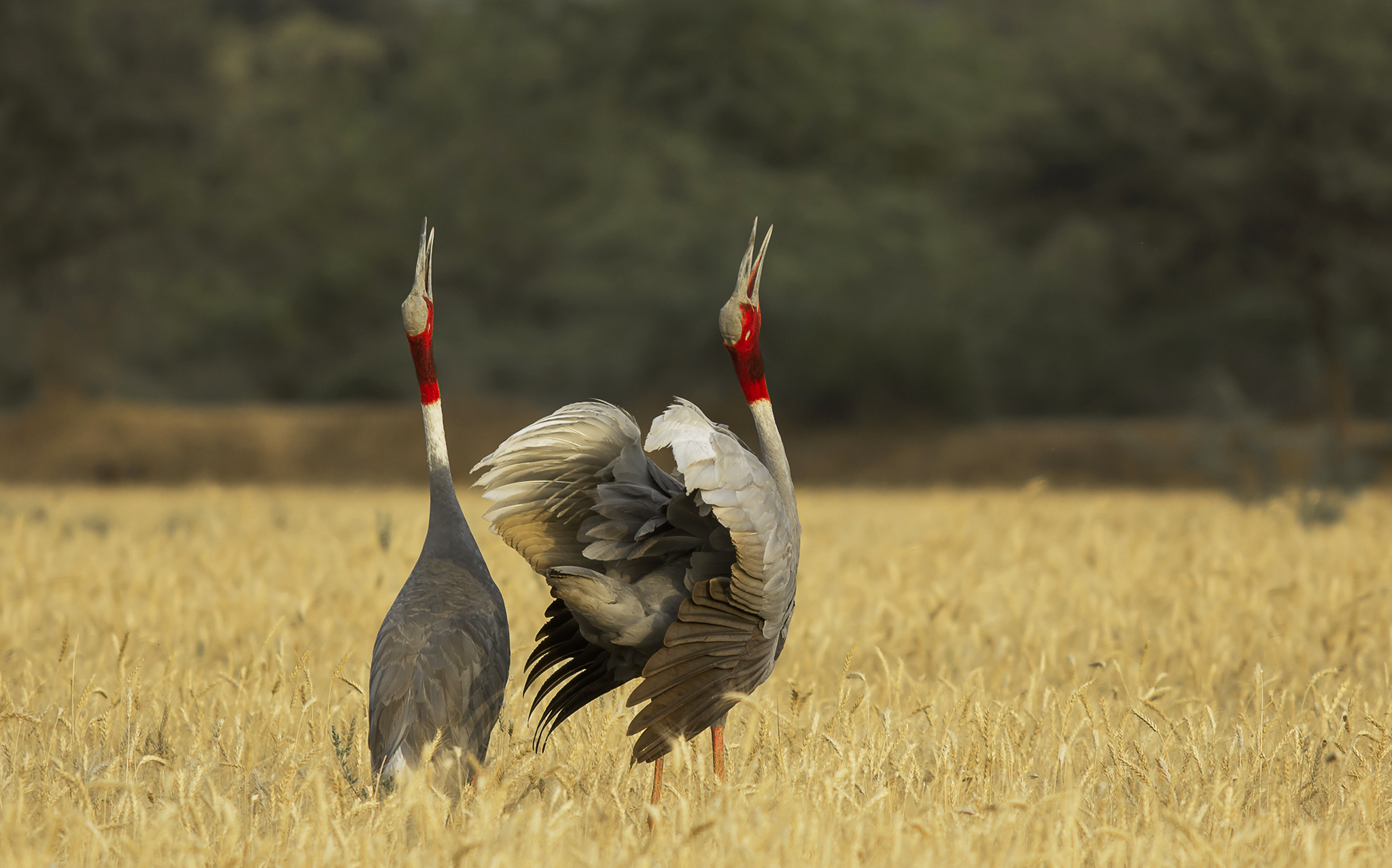
Sacred and traditional knowledge
A recent survey led by Nepali ornithologist Hem Bahadur Katuwal and his team showed that around 90 per cent of the sarus crane population in Nepal is concentrated in the Greater Lumbini Area — totalling around 582 individuals. Lumbini is also home to three Important Bird Areas (Kapilvastu, Lumbini and Devdaha) designated by the bird conservation INGO BirdLife International.
The word “sarus” comes from the Sanskrit word sarasa, which translates to “the bird of the lake.” There are three subspecies of the bird, billed the tallest flying birds in the world, which are found in South Asia (A. antigone), Southeast Asia (A. antigone sharpii) and Australia (A. antigone gillae). In Nepal, the bird with a greyish red head and neck standing at 3 meters (9.8 feet) tall is one of nine nationally protected birds and is also considered a symbol of conjugal love due to its monogamous behaviour.
In 1988, the International Crane Foundation and WWF Nepal, in partnership with Lumbini Development Trust, started a wetland restoration and sarus crane conservation program on 256 acres of land. The area was named the Lumbini Crane Sanctuary.
At the sanctuary, conservationists collect rainwater from the monsoon to retain water in the wetlands during the dry season. They have translocated more than 100 rare brown-roofed tortoises (Pangshura smithii) and fish from the drying pond in the area known as the Sacred Garden to the wetlands of the sanctuary. The program also planted different varieties of wild rice and native trees such as the Bodhi tree (Ficus religiosa) and prepared small islands on which the cranes can lay eggs safely.
“Traditionally, we believed that the sarus cranes spend most of their time in wetlands,” Katuwal says. “But now we’ve realised that they also utilise farmlands, especially rice fields,” he added.
That’s another reason the sarus cranes survive in Lumbini, said Nepali ornithologist Rajendra Suwal, one of the key people involved in the establishment of the sanctuary and the head of partnership development at WWF Nepal.

According to Buddhist mythology, when prince Siddhartha returned to Kapilavastu to meet his father after attaining enlightenment (nirvana), he gave his father and his subjects a new variety of rice called kala namak (kala, meaning black). “The rice is special because it has a strong fragrance and also because it requires a lot of water to grow,” Suwal said. “Its cultivation provides a perfect habitat for sarus cranes,” he added. Although there are not yet any scientific studies to support his claim, rice paddies with high water levels are preferred by the species.
During the rice planting season, the cranes, which lay eggs on the ground, create a bed for the eggs using strands from the paddy plant. They keep adding strands to make the bed taller and prevent it from being washed away. A breeding pair is estimated to damage plantations of around 1-2 kattha (126-252 square meters or 1,356-2,712 square feet) of land, Suwal said.
“But the farmers don’t mind, as they believe that the bird brings good luck and good harvest,” said Kailash Jaiswal, a resident of Lumbini. “Local people believe that the sarus crane is a divine species and it means no harm to people,” he added.
Conservationists working in the Buddha’s birthplace say factors in addition to the wetland have helped the crane population survive in Lumbini in past decades.
Suwal said the population elsewhere in the Terai Arc Landscape in Nepal may have collapsed due to large-scale hunting for meat following the laying of Nepal’s east-west highway that facilitated the migration of people from the hills to the plains.
“But that didn’t happen in the Lumbini area because of the culture of nonviolence of the ethnic Yadav people living in the area. They are also vegetarian,” said Suwal.
Monk Matteya said that in the past, the number of cranes in the Lumbini area was estimated to be fewer than a hundred, but results from the new survey showed that the wetland restoration may be having a positive impact on the cranes.
However, Indian ornithologist K.S. Gopi Sundar, a co-chair of the IUCN specialist group on storks, said he doesn’t believe the wetland restoration project or the practice of growing a certain variety of rice has the impact advertised.
“The sarus crane is a landscape-level bird living in large landscapes; restoring a few hundred acres of wetlands doesn’t have much impact on their conservation,” he says. “One wetland will help one pair only as sarus cranes are known to be territorial.”
It is the peasant farmers and their sustainable lifestyles that are helping save the species, Sundar says. “All we need to do is help farmers maintain their lifestyles, and the cranes can be protected,” he added.
Associating the Buddha and his teachings with the conservation of sarus cranes in Lumbini and the wetland, as the project’s campaigners do, can only serve the purpose of fundraising and marketing for conservation NGOs, he said.
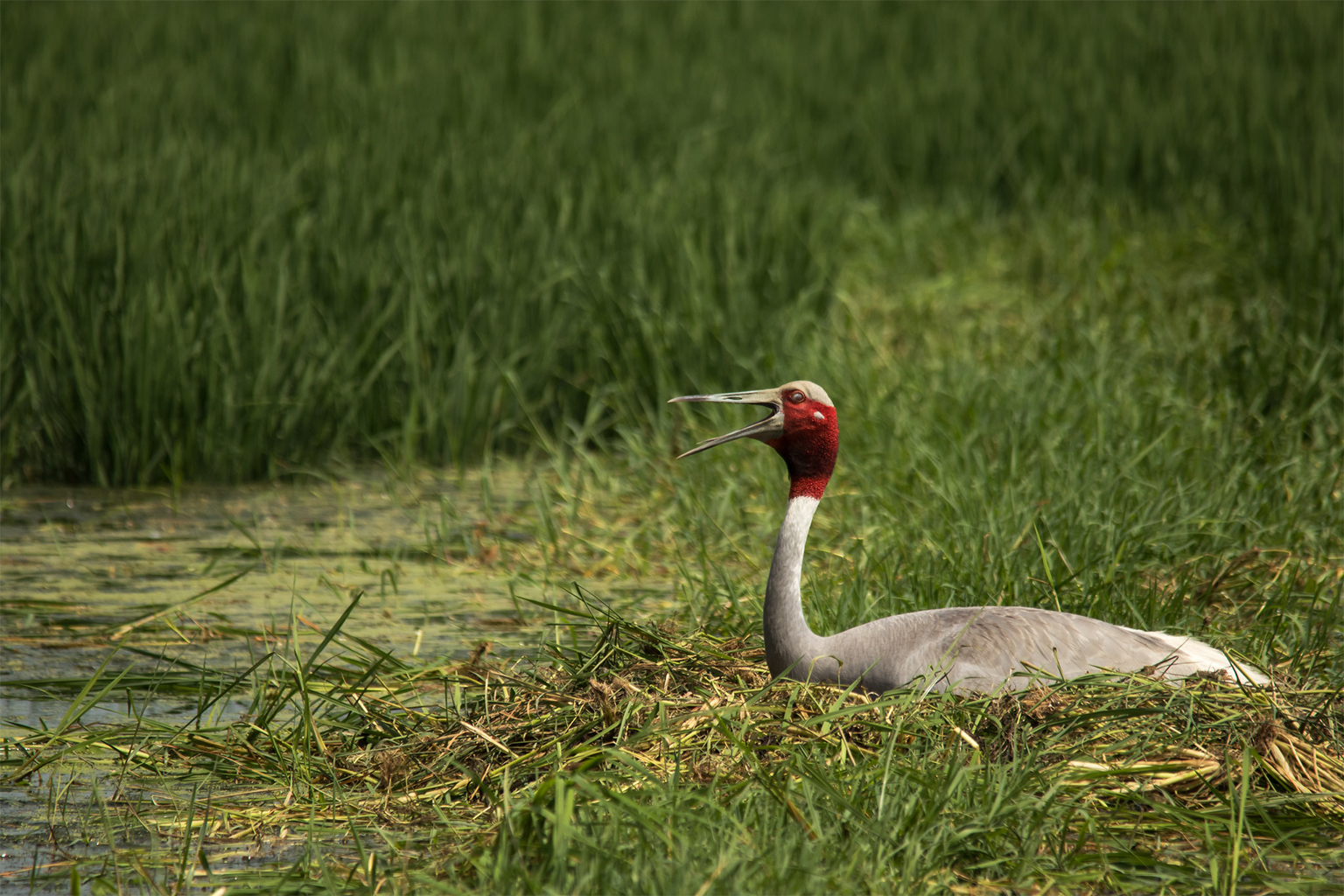
Preservation or destruction in the Buddha’s birthplace?
But the factors Suwal pointed out as being linked to the Buddha and saving the sarus cranes are fast changing. People from the hills with different cultures are migrating to the plains, rice paddies are giving way to buildings and concrete, and now farmers prefer to grow more profitable varieties of rice that yield more and bring more returns.
Katuwal said researchers can’t compare the data from the new survey with that from previous studies because there’s no baseline study, but the majority of people his team interviewed said the birds’ numbers had declined.
“Around 55 per cent of the people we interviewed said they believed the number of sarus cranes in the Lumbini area has declined in the past few years due to hunting and destruction of habitat,” Katuwal says.
Electrocution by the power lines in farmers’ fields and rapid expansion of unplanned urbanisation are major threats to the birds, said Katuwal. These changing factors are further adding stress to the bird, already listed as vulnerable by the IUCN, the global conservation authority.
“We also found that an increase in the built-up area could have an adverse effect on the population of the cranes,” Katuwal told Mongabay.
In 1978, the famed Japanese architect Kenzō Tange came up with a develop Lumbini as a global pilgrimage site. However, the government has gone on a construction spree without giving due consideration to the original master plan, including a new international airport that has not been successful in attracting the attention of international airlines to Lumbini.
The increase in built-up area in the Buddha’s birthplace has also been flagged by UNESCO, as the area is also a world heritage site. In its report, UNESCO says it has received third-party information expressing concerns about new developments at or in the vicinity of the property that may affect its “outstanding universal value.”
“It’s ironic that conservationists who are associating the cranes with the Buddha aren’t also talking about the large-scale infrastructure development projects being implemented in Lumbini in the name of promoting Buddhism,” Sundar said. “The large-scale construction activities are destroying the northernmost sarus population of the central Gangetic floodplain forever.”
Back in the ancient kingdom of Kapilavastu, where young prince Siddhartha saved the sarus crane from death, he watched the bird as it recuperated under his care and take to the sky. Little did the people around him know that thousands of years later, future conservationists and farmers would revisit the story again to debate the future protection of the species.
This story first appeared on Mongabay and Onlinekhabar is republishing it under a Creative Commons licence.





